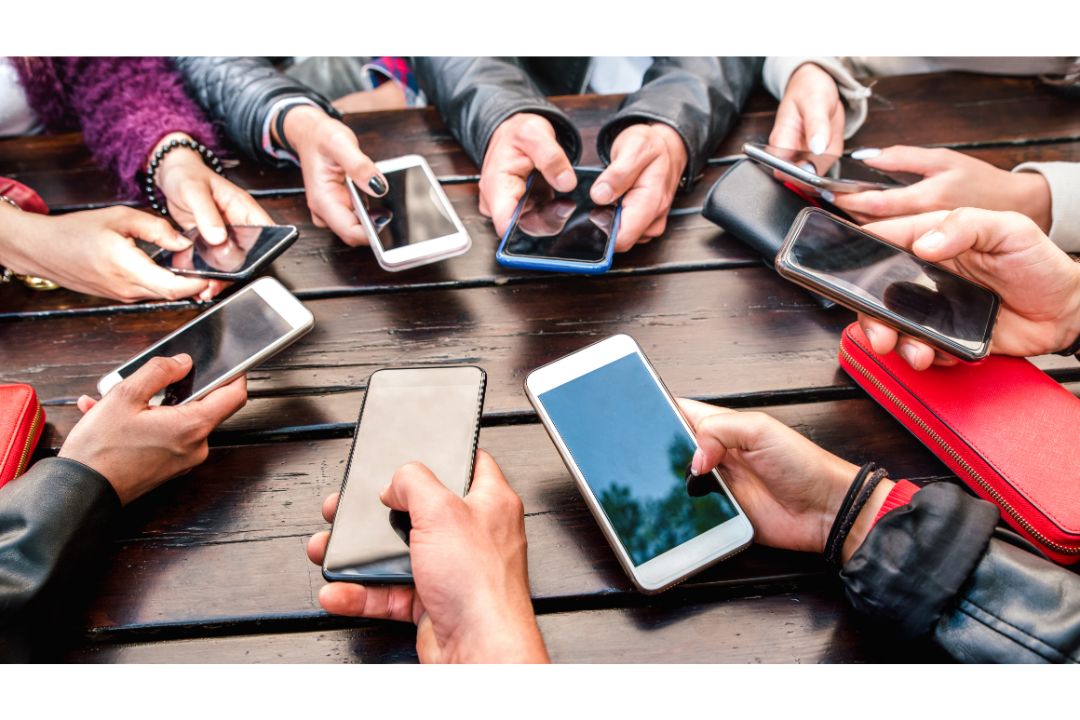The constant volley of messages gives an illusion of connection despite the relationship existing only within that liminal space.
Since messaging apps became a thing, the group chat became big a part of our daily life. The question hanging above our heads is, what happens when real life comes into play?
“Are you on (insert your favorite messaging app here)? Okay, I’ll create a group chat.” If I drooped 100 bucks into a jar each time I was asked this question, I’d probably have enough for a fancy dinner somewhere. But admit it, there’s gonna be a few GCs, as they are often referred to, on each app created for a myriad of reasons and pursuits. One for planning a trip, one for a workplace friend group, another for the cousins, and one more with friends who live far away.

Each one giving us a semblance of that connection we secretly crave via a steady exchange of messages over even the most mundane of things. The question is, does that connection translate when the friendship goes IRL?
When the pandemic happened, these group chats skyrocketed in popularity as communities hopped on to keep in touch with the outside world as everyone sheltered in place. From flea markets the came out of all that decluttering, to the retail chats to sell the ube pandesal, sourdough bread, and muffins that everyone suddenly had the extra time to make.
Resident and even pet chat groups became the go-to for resource sharing. In our area, there was even a group just for people who loved happy hour. These group chats became a lifeline to what suddenly felt like a dystopian reality. As everything opened up, activity on the GCs slowed as everyone went back to their lives. But they did not completely go away either.
Friendship without commitment
Now that we have worked past “the new normal” (is that even really a thing anymore?), there has been a shift in the role GCs play in our daily lives. On one end, it remains a semi-reliable source of information, with some allowance for fake news and rumormongers, for communities, friend groups, or even families. Birthdays, reunions, or the occasional aircon repairman that seems to be always in demand.
This meeting becomes a source of anxiety, as you realize that online you and online them make for much better bedfellows, especially when in the company of many
On the other, it becomes, and this may be debatable, a safe space for those who crave the friendship the GCs emulate, sans the need to fully commit. I’m going to steal from Gen Z, and say that sounds a lot like a situationship. We’ll circle back to this in a minute.
As the internet and social media became integral to our daily lives, we all became some version of a keyboard warrior. Conversations — via email and messaging apps— last all hours of day and night, as we squeeze them in between meetings, grocery runs, and gym water breaks. This is a leap from back in the day when rotary and pay phones (cue in “tatlong bente-singko lang…’“song) were the only way to talk to people, before graduating to pagers and 140-character SMS messages. Now you can pretty much send anything – photos, videos, links, reels – all in real time. It’s like everyone in the group chat came along for the ride.
Then it becomes IRL
So, to my point: if these group chats provide enough connection, why the need to carry it over into the real world? Imagine having to actually meet up with people face-to-face!! When you’ve mostly built a connection online, will that translate when you’re sitting across the table from each other? Will there be enough to talk about between the mouthfuls of food used to fill the gaps? Or, as they like to say these days, “Will my social battery hold up?”

For the lucky few, there will enough things in common to decide that this friendship deserves a fighting chance out in the wild. For the rest, this meeting becomes a source of anxiety, as you realize that online you and online them make for much better bedfellows, especially when in the company of many. So you are, therefore, in a situationship with the people in your group chat, whom you’re not sure you really want to be friends in the real world.
I was having a conversation with a friend some months back about this. We were talking about how we both met quite a lot of new people over the pandemic through a group we had joined, or work, or a food thing (that’s actually how we met).
Somewhere along the way, we ended up chatting over all sorts of random things, as I am wont to do, and eventually became friends IRL. Whew! So the question posed was: if you met people online (which is not limited to online dating, mind you), at what point do you decide you are friends?
Unlike real life introductions, you can easily gauge if you like a person enough right there to consider befriending them. But when you meet online, or in a GC, all you have are the one to two-sentence responses they give, and their posts on social media. So the decision to actually meet up becomes a conscious and deliberate choice. After all, you could just keep it all in the chat.
Essentially, group chats were born out of the need for connection. To be able to build a stronger bond between a select group of people, defying distance and busy schedules. To keep abreast of what’s going on in everyone else’s lives without the need to fully engage outside of the few minutes you need to send a response. It also allows you the freedom to just sit quietly without anyone calling you out.
That said, the group chat was never meant to fully replace real life interaction. Sharing a laugh with a friend, jumping into a conversation with the person next to you — those are the kinds of bonds that nourish us. Not the few words hurriedly typed out while waiting in line at the grocery store. While they will always have their time and place, the situationships we find in group chats are not what we need. Real life friendships — that’s what we do need.








